We’re crammed in along one wall of a rehearsal studio in Hackney, east London – hoodies and coffee cups, bare walls and strip lighting – as two singers work on a short scene. From a piano jammed between members of the creative team, a repetiteur sketches near-static harmonies soon to be played by a chamber orchestra. The vocal lines are lyrical, but hesitantly so, fixating on just a handful of notes: a mother and son are struggling to communicate. It’s powerful, painful to watch, even in this raw form – but it’s also constantly evolving. Unhappy with the pacing of the exchange, the conductor stops the singers mid-phrase. “I think we’ve lost some reality now because it’s become ‘opera,’” she says. There are nods all round.
The Guardian’s product and service reviews are independent and are in no way influenced by any advertiser or commercial initiative. We will earn a commission from the retailer if you buy something through an affiliate link. Learn more.
Hang on a minute. We’re in a rehearsal for a new operatic work and the conductor is worried that it’s sounding like opera?
But it’s clear what she means. The OTT, ain’t-over-till-the-fat-lady-sings opera, littered with improbable plot twists and extravagant deaths – this is the stuff that has fed opera’s reputation for elitism, misogyny or just all-round silliness. As WH Auden once quipped, “no opera plot can be sensible, for people do not sing when they are feeling sensible”.

The question is, do these associations have anything to do with new opera today? Even George Benjamin’s repertory-ready Lessons in Love and Violence, recently premiered at the Royal Opera House, has been described as a work in which “the usual priorities of opera have been reversed”. But there’s life beyond the mainstage, with several forthcoming premieres challenging what opera is – what it can do – in 2018.
There’s certainly no space for operatic cliches in the Hackney rehearsal. When I arrive, the performers are just speaking their lines, searching for the most natural-sounding delivery, feeling their way through the human drama. The piece in rehearsal is Mamzer Bastard, a new chamber work by Na’ama Zisser, the doctoral composer-in-residence at the Royal Opera House.
Zisser is a relative newcomer to opera. “I found out about it as an adult, very late. I grew up in one of the most orthodox cities in Israel, coming to opera from contemporary music and going backwards.”
It’s nice to be part of that history – but not in the sense that I feel terrified by it.”
So what does that mean for her approach to composing one? “I have no very fixed ideas about what a good opera subject is. I think I’m more driven by intuition.” In the case of Mamzer Bastard, that intuition was to “explore my personal background”. With a libretto co-written by her sister and sister-in-law, the opera is set in the Orthodox Jewish community during the New York blackout of 13 July 1977. It’s advertised as one of the first operas to feature cantorial music (“it’s a very drony music, which is great because I love drones!”) and the cast includes an American cantor, Netanel Hershtik. But Zisser is keen for this to be more than a compositional gimmick. “I made a serious effort to get into that musical world in every possible way. I spent a lot of time going to archives, listening to very old pieces, sitting with manuscripts. I hope I’ve managed to develop a language that feels natural and does not place cantorial music as a kind of found object.”
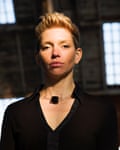
I wonder whether Zisser has to some extent sidestepped the pressures exerted by opera’s long history – both its masterpieces-on-tap and its elitist reputation – by coming to it so recently. “Working in an amazing building such as the Royal Opera House, walking down the corridors with all these photos, which freaks me out every time, it’s nice to be part of that history – but not in the sense that I feel terrified by it.”
The Manchester-based composer Emily Howard, whose chamber opera To See the Invisible premieres at the Aldeburgh festival on 8 June, is similarly unintimidated. “The string quartet also has baggage,” she points out. “I like history and tradition. I just don’t think that opera should be a historic genre. I like to look forward.” Her new opera does so literally, taking a short sci-fi story from the 50s by Robert Silverberg as the basis for Selma Dimitrijevic’s libretto: a person has been sentenced to a year of invisibility for a crime of coldness (“Whatever that is – you never find out”).
I don’t think that opera should be a historic genre. I like to look forward.
But the character is musically transfigured in Howard’s version. “I’ve set The Invisible as both male and female voice,” she says. “They have this amazing duet sound. I’ve got a bass-ish baritone with an amazing falsetto; and I’ve got a wonderful soprano with the kind of Queen of the Night range but also a mezzo range. So when they’re alone, this very ethereal, strange thing comes out.” It’s a reminder that the weirdness of the operatic voice – the fact that it can be so “unrealistic” – needn’t be an obstacle to overcome. To See the Invisible uses opera’s vocal extremity as an expressive device, a means of marking out a character’s difference from everyone else.
For the composer Tansy Davies, opera is about the power of the voice: “There’s a magnetism to it – there’s something about people singing on a stage and music that I find irresistible.” Her new work, Cave, contains just two vocal roles – for a classical singer (tenor Mark Padmore) and an improv singer (Elaine Mitchener). “I love the kind of energy that comes when you put those together,” she says.
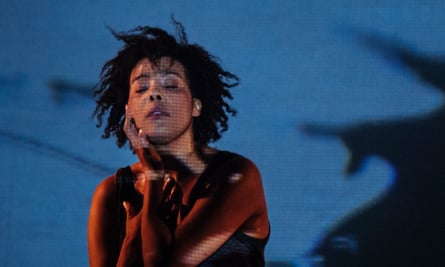
Cave is her second collaboration with the writer Nick Drake following their 9/11-set Between Worlds, premiered by English National Opera in 2015. The new work is, as Davies puts it, a “vision quest, a story about a grieving man who makes a journey of self-discovery, which is deeply rooted in his feelings of loss. The man finds refuge in a cave, partly as shelter from extreme weather conditions and partly to perform a ritual for his lost daughter.”
Davies is fascinated by cave paintings, in which “all time exists at once – so it’s not like past, future, present. It’s like: this is our world, and how do we make sense of it?” Music, she thinks, offers something comparable: “It’s where time really does weird things.” There’s often something cave-like about Davies’ music – it’s full of what she calls “almost cathedralesque spaces”. She’s keen for Cave’s audience to feel immersed in this soundscape: “With opera, I think partly due to the fact that if it’s on a big main stage, it can feel a bit distant. I want the audience to feel part of it … Actually the audience are going to be very close to Mark [Padmore], and he’s going to be doing some crazy things. I hope it’s as exciting as seeing Led Zeppelin live!”
We've got to open hearts and minds ... Opera is not just about heroes & villains
The comparison might raise eyebrows. “I do feel this massive panic,” she admits. “Artists have got to reach people, we’ve got to open hearts, we’ve got to open minds. I think the categorisation of opera has to change – it’s not just about heroes and villains.” After Cave, she says, “there’s another story, quite a different one, I’d like to look at.” Howard, meanwhile, has found opera “addictive” – “I’d do another one immediately,” she grins – and Zisser reckons the art form “is changing a lot. It’s becoming more real and relevant.” With such enthusiastic advocacy and such creative challenges to the status quo, perhaps new opera is indeed shrugging off some of its oldest associations. But, Zisser concedes, “it’s a very long process”.
- To See the Invisible is at the Aldeburgh festival, 8-11 June; Mamzer Bastard is at Hackney Empire, London, 14-17 June; Cave is at Printworks, London, 20-23 June

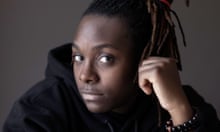
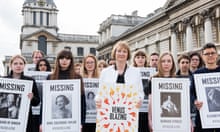


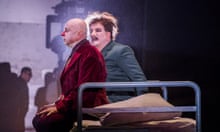

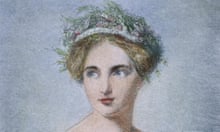
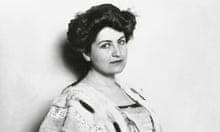
Comments (…)
Sign in or create your Guardian account to join the discussion